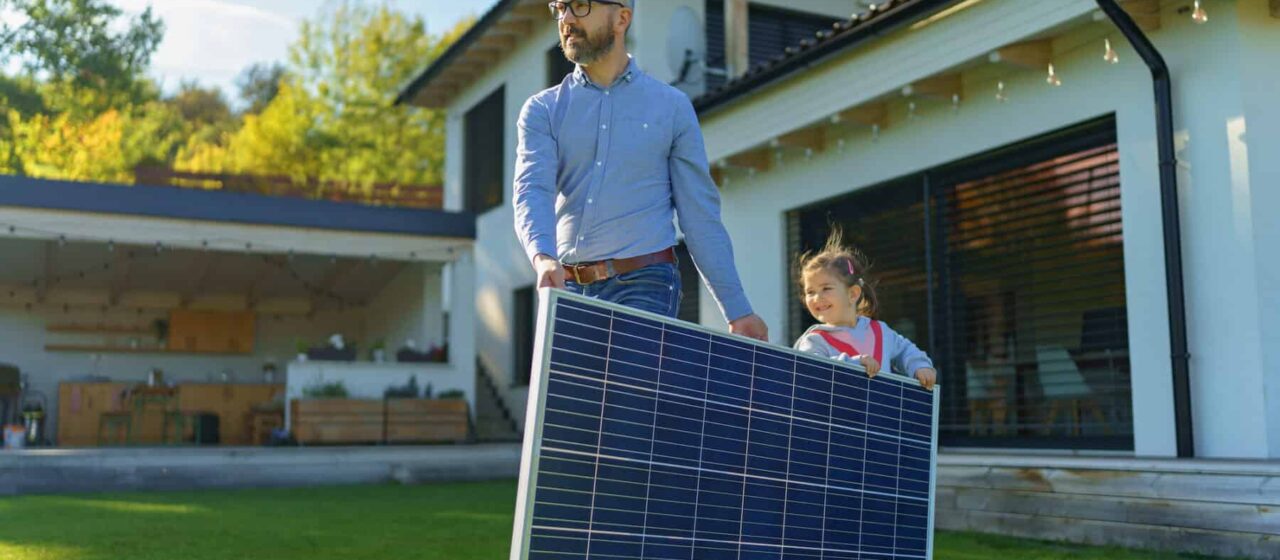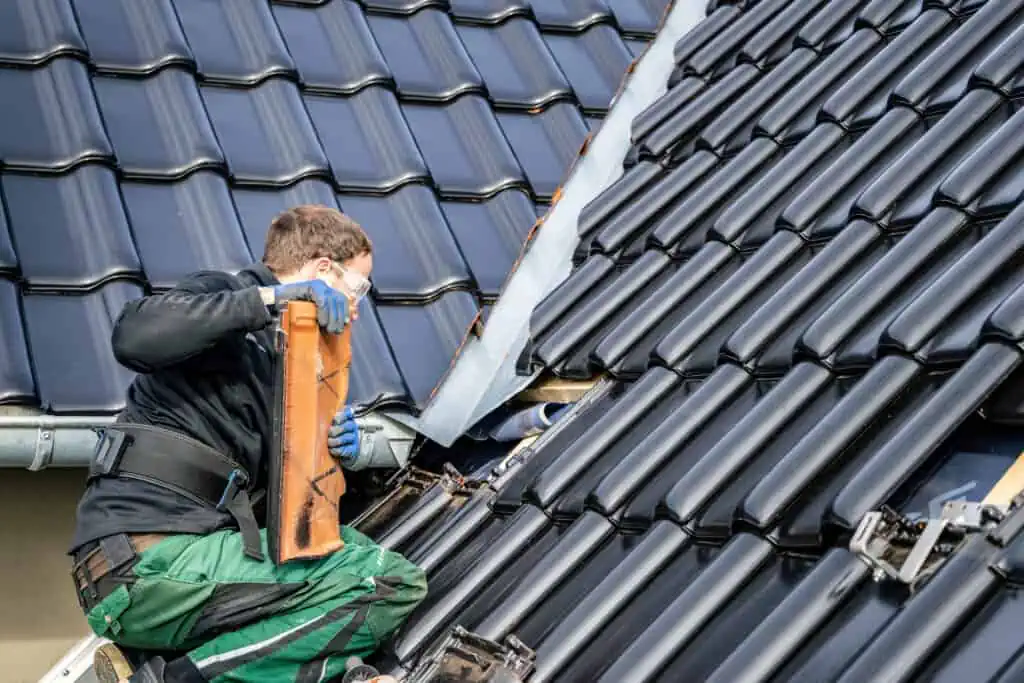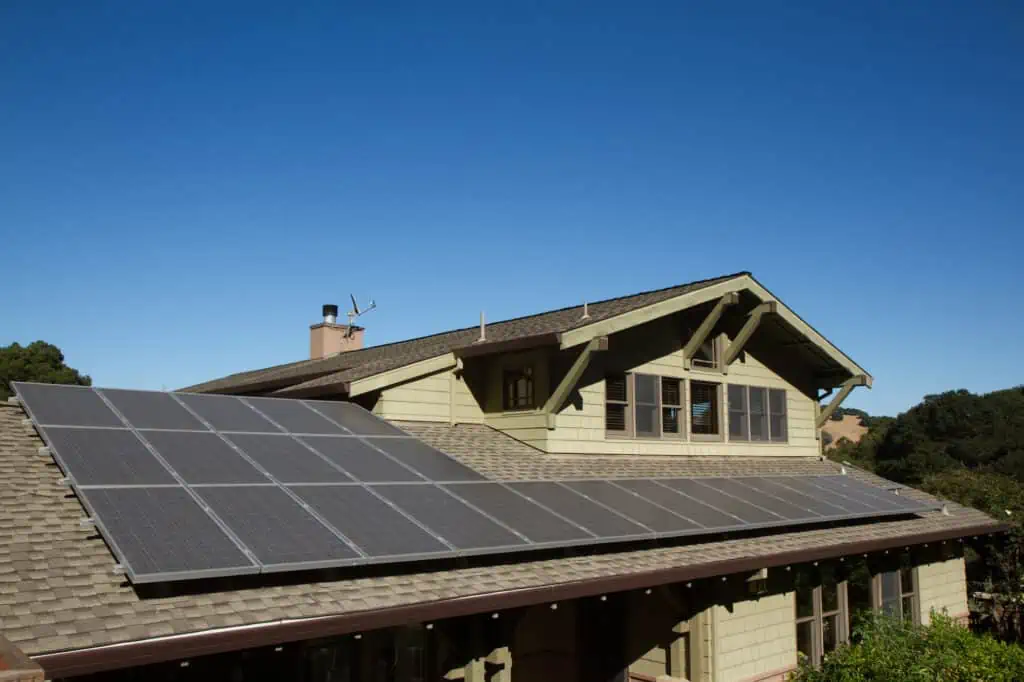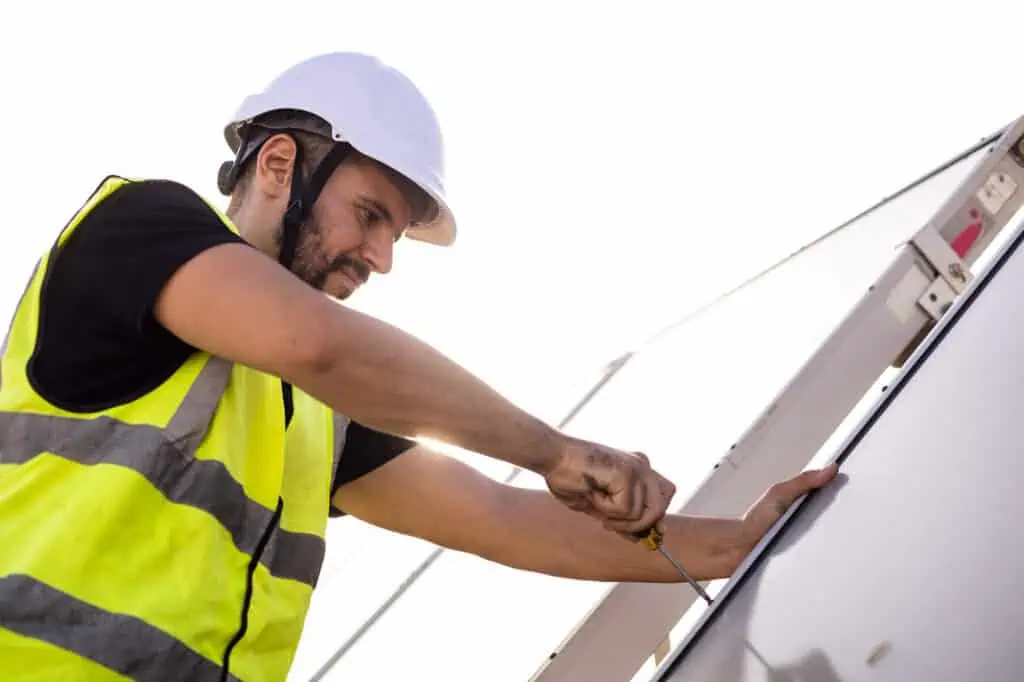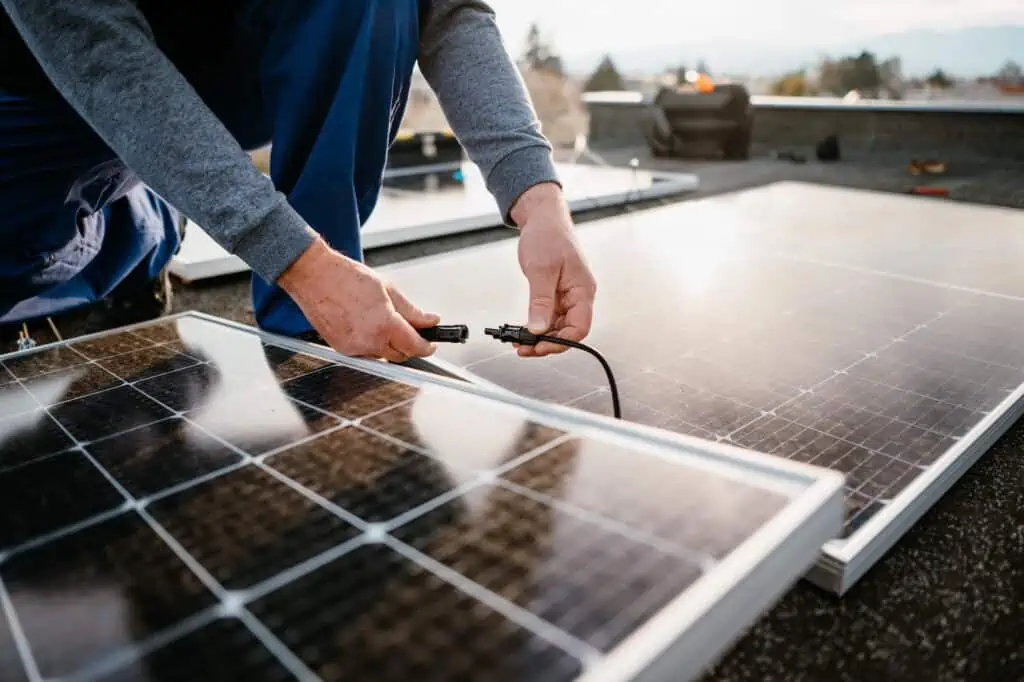Tips for Moving Your Solar Panels
Posted in: I'm Moving, Green Moving, Moving AdviceInstalling solar panels on your house is a major investment. So if you’re moving to a new home, you understandably want to bring that investment with you.
The good news: it may be possible to move your solar panel system from one property to another. The bad news: it will likely be expensive and difficult. Still, if you’ve decided to take them with you when you relocate, here’s what you should know about moving solar panels.
Is Moving Solar Panels a Good Choice for Me?
First, you’ll need to determine whether moving your solar panels makes sense in the first place. You should ask yourself the following questions to determine if it’s feasible, in your budget, and worth the effort before you put your current home on the market.
Are you moving to a property nearby or relocating long distance?
Local moves are likely going to be the more feasible option, since the company that originally installed your solar panels may be willing to uninstall them and relocate them for you. Because they’re experts, they have the specialized equipment and know-how to properly move solar panels (and all their delicate components and wiring).
“…you can expect to spend anywhere between $5,000 to $14,000 for the entire process of moving a residential solar panel system.”
If you’re moving far away, the original solar panel company probably won’t be willing to help with relocation. So not only will you have to figure out this complex process on your own, but uninstalling the panels will void any warranty that’s still on them. Also, if you’re moving to another state, it’s important to find out what standards the solar system needs to meet and what permits are required for photovoltaic panel installation.
Will removing the panels damage the roof?
Another issue to consider is the current condition of your roof and how uninstalling the panels will impact it. When your solar panels are installed, mounting hardware is drilled directly into the roofing material. Removing this hardware and the panels will leave holes that need to be repaired before you move.
The color of the roof will also likely be affected, with darker patches where the solar panels had protected it against fading. This may impact the sales prices and/or your ability to find a buyer.
Will your panels fit the new home and get proper sun exposure?
Aside from fixing up damage to your old home, you’ll also need to find out whether the solar panel system will work properly at your new property. If it’s an older home, the roof might not be in good enough condition to withstand the strain of a solar system on it.
Also, solar panel systems are designed to custom-fit the dimensions and orientation of a house. You’ll need to be completely sure that the existing panels fit the roof of your new home, and that they’ll get proper sun exposure. If there are any structures or trees that block sunlight, for example, you may need to make modifications so that your system works to its fullest capacity.
See prices for local moving labor. Read real customer reviews. Easily book your help online.
How much is this going to cost?
The price to move solar panels can vary widely based on a variety of factors. These include the size and complexity of the solar panel system, the distance of the move, the conditions/layout of the new installation site, and regional labor and permitting costs. However, to give you a ballpark estimate, here’s how you might go about determining the cost of moving solar panels:
- Uninstallation: Labor costs might range between $1,000 and $3,000 for a residential system. And depending on the condition of your roof after the panels are removed, you might have to budget for some roof repairs, which could cost between $300 and $1,000 or more
- Transportation: Depending on the distance and the logistics, the transportation of the panels themselves to a new location could range from $500 to $2,000
- Reinstallation: You may need new mounting hardware for the new installation, which could potentially add $500 to $2,000 to your budget. Plus, the reinstallation labor costs might be in a similar range as the uninstallation, so another $1,000 to $3,000
- Permitting and administrative costs: You will likely need to secure a variety of permits for both the removal and the new installation, which can vary widely but might cost between $500 and $2,000 (some cities might waive these fees to encourage energy-efficient upgrades). A new site assessment for the new installation site might add another $500 to $1,000 to the project
- Buffer: Given that there might be unforeseen costs, adding a contingency of 10-20% is recommended
Adding up these rough estimates, you can expect to spend anywhere between $5,000 to $14,000 for the entire process of moving a residential solar panel system.
Okay, I’ve Decided To Move My Solar Panels! Now What?
If you decide that it’s worth relocating your solar panel system, you’ll need to create a detailed plan that includes your timeline, budget, and necessary permits or approvals.
Disconnecting and Removing the Solar Panels
When uninstalling solar panels, it’s best to rely on the company that originally installed them, if possible. At the very least, you should hire experienced solar technicians who know how to uninstall, transport, and reinstall solar panels.
The option we do not recommend is doing this project yourself with or without the help of third-party technicians. However, it’s still useful to understand the general procedure. Below are the steps involved in disconnecting and removing solar panels to prepare them for transport:
- Prepare for uninstallation: Notify the local utility company about your plan to uninstall the system. If necessary, you may also need to notify local authorities, especially if permits are required for solar panel system removal.
- Take proper safety measures: Be sure to cordon off the area where the work will be taking place to ensure everyone’s safety. Use the solar panel system’s shutdown procedure, which generally involves turning off the solar inverter first, followed by the solar disconnect switch. You can then disconnect the system by first switching off the DC disconnect (located near the inverter), and disconnecting the wires connected to the solar panels. Then switch off the AC disconnect (generally situated near the main panel), and disconnect the solar system from the main electricity panel.
- Unmount the panels: Start by removing the fasteners or bolts holding the panels in place. Then carefully lift the panels off their mounts with the help of others. Keep in mind that solar panels are heavy and fragile. You’ll need to disconnect the wiring between the panels; it’s helpful to label the wires so you have an easier time with reinstallation at the new location.
- Dismantle the mounting system: After removing the panels, you can finally take apart the racking system. Be sure to repair and seal any holes left in the roof to prevent leaks.
Transporting solar panels
Again, it’s highly advisable that you work with a solar panel company and technicians who have the right equipment for transporting solar panels.
To be upfront about it: a lot of moving companies won’t take on the liability of transporting something this specialized and delicate. But if you do manage work with movers, be sure they know in advance that you are planning to move solar panels. Verify they are willing to transport these items and have the specialized knowledge and equipment to do it right.
Solar panels are usually packed in pallets vertically to ensure they aren’t damaged during transport. The first panels are placed in the pallet bottom up and the last one is placed front side up. You should also use corner protectors and foam pads across the frame, with a piece of cardboard or plastic in between every two panels. Panels should be strapped near the corners and never in the middle.
Site preparation and reinstallation
Reinstalling solar panels at a new site involves a detailed process to ensure that the system will operate efficiently and safely. Here’s how to go about it:
- Start with a site assessment: If you haven’t already, have a professional determine the optimal location for the solar panels, considering the path of the sun and potential obstructions such as trees or buildings. They should also assess the condition and structural integrity of the roof or ground where the solar panels will be installed.
- Design and planning: Next, your team should work on a design plan, including a layout for the solar panels that maximizes energy production.
- Get your permitting in order: It’s important to ensure you’re in compliance with local regulations and that you obtain the necessary permits for the installation. Notify the local utility company that you’re installing the system and find out their requirements for grid-connected solar systems.
- Prepare to install: Be sure you have all necessary materials on hand, including mounting hardware and electrical components. And remember: safety first. Everyone involved should have the appropriate gear on to protect themselves while working on the reinstallation.
- Installation: Install the mounting hardware and the solar panels, ensuring everything is securely anchored, aligned, oriented, and properly fastened. If possible, hiring local solar panel technicians can be a great help.
- Get the electrical connected: Finally, get all the wiring connected between panels according to the design. Then install the inverter and connect it to the solar panel system. Be sure that the system is properly grounded.
- Test the system. Once everything is wired back up, run some system tests to make sure all the components are functioning correctly. If necessary, arrange for inspections by local authorities or utility company representatives.
See prices for local moving labor. Read real customer reviews. Easily book your help online.
Solar Panel Laws and Perks
In general, installing solar panels and other eco-friendly home improvements is encouraged by both the federal government and individual states. Many cities encourage investing in solar energy as well. When moving, some of these incentives might play into where you ultimately decide to relocate.
“…[B]e completely sure that the existing panels fit the roof of your new home…If there are any structures or trees that block sunlight, for example, you may need to make modifications so that your system works to its fullest capacity.”
For example, on the federal level, homeowners can take advantage of the Federal Investment Tax Credit (ITC), which is an incentive program that offers a tax credit equal to 26% of the cost of the solar systems installed from 2020 to 2022. For systems installed in 2023, taxpayers can receive 22% back. However, unless it gets renewed, this tax credit expires in 2024.
Certain states also have their own tax credits and exemptions, as well as rebates for installing solar panel systems. Some states have also instituted net metering, which is when utility companies credit homeowners for the excess power produced by their solar panels. You can see what credits might be available in the state you’re moving to in the Database of State Incentives.
After all of that information, you can likely tell that relocating solar panels is a pretty intensive process. You might decide that it makes more sense to leave your existing solar panel system installed in your old home and invest in another one that’s customized to your new home.
However, if you do decide it’s worth the money and hassle to relocate an existing system, be sure you work with knowledgeable professionals and take all the necessary steps to protect this equipment along the way.

